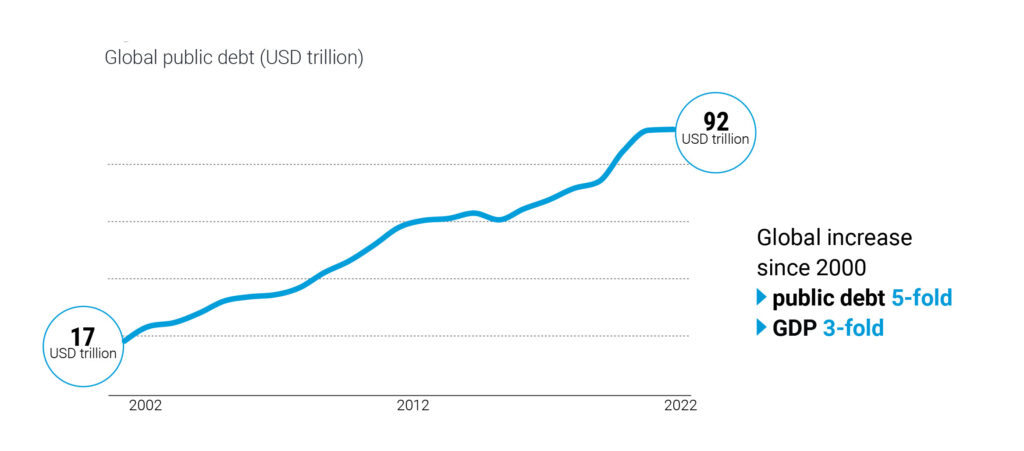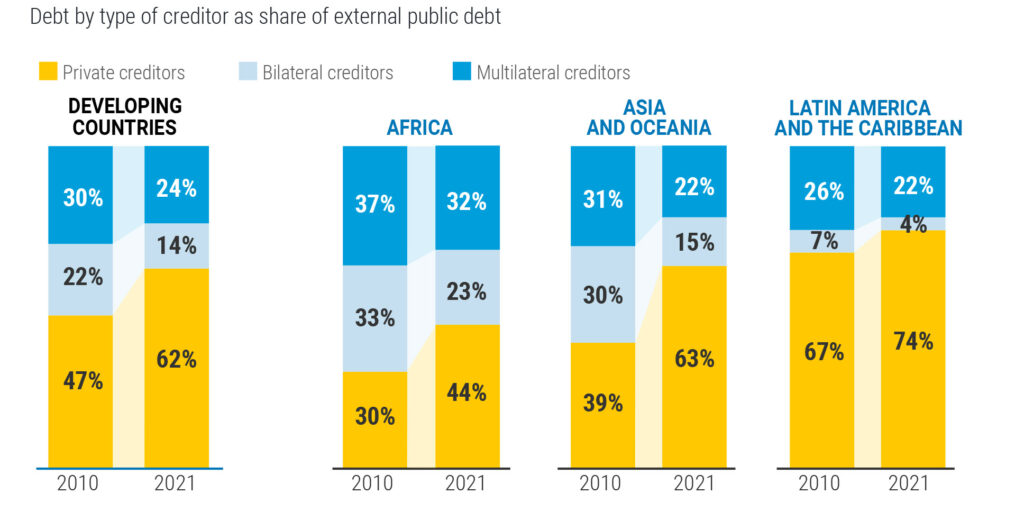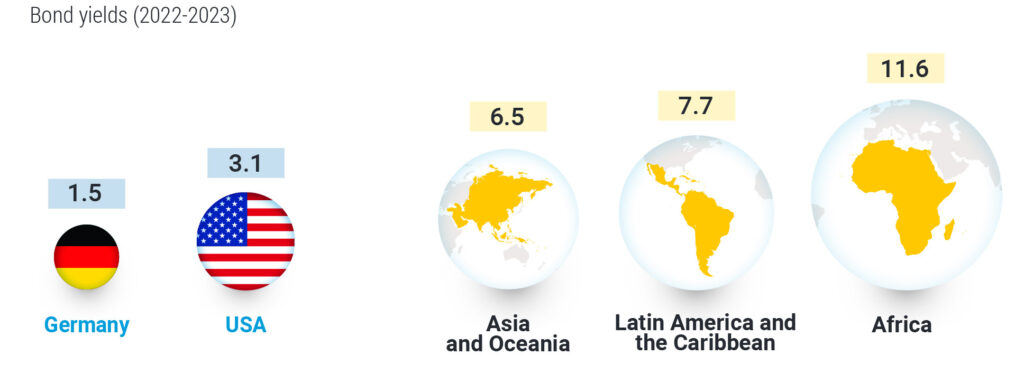
Chains of debt
The deepening of the general crisis of bureaucratic capitalism as part of the process of decompositioning of imperialism is once more revealed by a report of the “UN GLOBAL CRISIS RESPONSE GROUP“ called “A world of debt – A growing burden to global prosperity“. This report estimates that global public debts skyrocketed to an all-time high of 92 trillion US-Dollar. This means that public debts five-folded from the year 2000. The global GDP in the same period tripled. This underlines a very unhealthy imbalance of the economy of the world’s imperialist system.

The report clearly stated that half the world is sinking in a disastrous development driven by this debt crisis. The public debt has increased faster in the so-called „developing countries“ compared to the so-called “developed countries” over the last decade. This rise of debt in the oppressed countries according to the report has mainly been due to growing development financing needs and by limited alternative sources of financing. That means restructuring the old state and impulsing the economy, two of three key tasks of the reign of reaction in the oppressed countries. 52 of the poorest countries are developing into a debt-trap without a chance of recovering. A big crash is predicted.
“The developing countries are dealing with an international financial architecture that exacerbates the negative impact of cascading crises on sustainable development. The burden of debt on development is intensified by a system that constrains developing countries access to development finance and pushes them to borrow from more expensive sources, increasing their vulnerabilities and making it even harder to resolve debt crises.” The report states, acknowledging that their system is the source and not the solution.
The total public debt of the oppressed countries increased from 35% of GDP in 2010 to 60% in 2021. Similarly, their external public debt, the part of a government’s debt owed to foreign creditors, increased from 19% of GDP to 29% of GDP in 2021.

The oppressed countries are in a situation where they are forced to borrow money to impulse their economy and restructure the old state but for exorbitant interest rates. In general countries in Africa have to pay average rates that are four times higher than those of the United States and even eight times higher than those of Germany. Countries in Asia pay four time higher rates and Latin American countries pay five times higher rates than Germany.

Hence, the so-called “developing countries”, a cynicism that tries to hide their character as being chained in underdevelopment by the imperialist oppressing countries, are stuck. There is no way out than to overthrow the semi-coloniality and semi-feudality on which bureaucratic capitalism unfolds. One of the democratic revolutions key measures is to confiscate the foreign debt that chains the oppressed countries ever more.
One effect of the current situation is the prevalence of undernourishment. It jumped from 8.0 percent in the year 2019 to almost 10 percent in 2021, as a recently published report of the “Food and Agriculture Organization of the United Nations” shows. Up to 828 million people were affected by hunger in 2021. The number has grown by about 150 million since the year 2019. Almost 3.1 billion people – more than 1/3 of the world population – could not afford a healthy diet in 2020. This is 112 million more than in 2019. It is noteworthy that this situation is definitely not due to too less food production or the abilities of distribution. Imperialism let the people starve to death not by chance but willingly.

